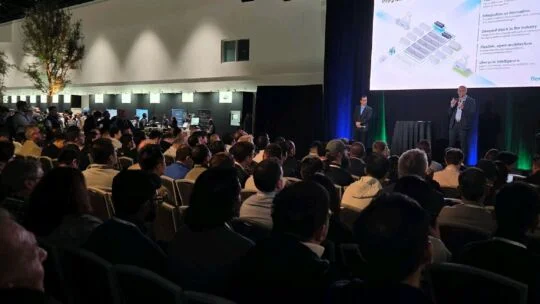
En la entrega anterior de nuestraSerie de blogs sobre cómo construir un negocio sostenibleDiscutimos diversas buenas prácticas para la recopilación de datos.
Una vez finalizado el arduo trabajo de recopilación de datos, las empresas están deseosas de ponerlos en práctica, evaluando el desempeño de la sostenibilidad organizacional e informando de este progreso a las partes interesadas.
Pero antes de dar ese paso, es necesario garantizar que los datos procedentes de todas las áreas de la organización sean sólidos y fiables. En este artículo, compartimos métodos de validación de datos.

Garantizar la integridad de los datos
Cualquier evaluación del desempeño en sostenibilidad de una organización dependerá de la precisión de los datos. Ante el creciente escrutinio de los informes de sostenibilidad, es fundamental generar confianza en estos datos, ya que cualquier información dudosa puede atraer críticas indeseadas y dañar la reputación. Además, todo indica que, en un futuro próximo, algunos gobiernos exigirán a las empresas que cotizan en bolsa que divulguen sus indicadores de sostenibilidad.
La necesidad de garantizar la veracidad de los datos de sostenibilidad afecta a diversos grupos de interés. Los clientes los necesitan para validar sus cadenas de suministro, los inversores quieren asegurarse de que no haya prácticas de lavado verde en sus carteras y los organismos reguladores exigen cada vez más garantías. Para abordar esta creciente demanda, es el momento de redoblar esfuerzos para reforzar nuestros sistemas y mecanismos de validación de la exactitud de nuestros datos de sostenibilidad. Existen diversas maneras de garantizar las prácticas de sostenibilidad de su organización.
Auditorías internas
En Flex, nuestros mecanismos de validación de datos involucran múltiples capas y nuestra primera línea de controles de precisión se lleva a cabo mediante procesos de revisión internos que instituimos hace ocho años.
Asignamos un revisor interno a cada una de nuestras tres regiones: América, Asia y Europa, incluyendo Oriente Medio. Cuando nuestros centros envían los conjuntos de datos mensuales, estos auditores los verifican cotejándolos con sus fuentes de datos. Por ejemplo, algunos de nuestros datos de sostenibilidad provienen de facturas; cada centro obtiene sus datos de consumo de agua de su factura. A su vez, nuestros auditores revisan la exactitud de esta partida basándose en una copia de la factura. Si surgen problemas, cada auditor colabora estrechamente con los responsables de sus centros asignados para resolverlos, incluyendo los ajustes necesarios. Además de revisar los errores de entrada de datos, los auditores internos también buscan inconsistencias e irregularidades. Si observamos picos inusuales en el consumo de electricidad, investigamos y explicamos la anomalía.
El siguiente filtro de precisión se produce al final de cada trimestre, cuando analizamos los datos utilizando un panel de líneas de tendencia y gráficos. Estas visualizaciones nos ayudan a salir a la luz y buscar explicaciones sobre las irregularidades no detectadas durante las auditorías mensuales.
El siguiente punto de control es nuestra auditoría anual, que se realiza antes de la publicación de nuestro informe anual de sostenibilidad. Durante esta revisión final, recopilamos los datos de diversas maneras y confirmamos que coinciden, incluso después de analizarlos en detalle. Por ejemplo, solicitamos a nuestros centros que clasifiquen el volumen mensual de residuos generados como residuos para vertedero, reciclables y peligrosos. Durante la auditoría anual, realizamos comprobaciones cruzadas revisando el desglose anual de los residuos reciclados por material, como vidrio, cartón y aluminio. Esperamos que exista concordancia entre la suma de residuos reciclables por material y la suma de residuos reciclables por volumen durante los últimos 12 meses.
Nuestro equipo de gestión de riesgos, que forma parte de nuestra organización financiera, también realiza un análisis de nuestros datos desde la perspectiva de la evaluación de riesgos. No existe una periodicidad fija para esta auditoría, lo cual consideramos una buena práctica, ya que fomenta la agilidad.
Empleamos un proceso proactivo y continuo para el seguimiento de los indicadores clave de rendimiento, lo que nos permite detectar anomalías y monitorear el progreso hacia nuestros objetivos. Además, estas revisiones constantes nos brindan mayor confianza en los datos a medida que avanzamos. De esta manera, evitamos resolver inconsistencias imprevistas cuando se acercan los plazos de entrega o recibimos notificaciones de auditoría de nuestra oficina financiera.
Auditando a nuestros proveedores
A medida que nos aseguramos de que las prácticas comerciales de nuestros proveedores se alineen con nuestros objetivos de sostenibilidad, también empleamos un proceso para auditarlas.
Exigimos a nuestros proveedores que completen un Cuestionario de Evaluación de Proveedores (SAQ) y cumplan con los requisitos de la norma Flex, incluyendo una evaluación social y ambiental basada en los principios del Código de Conducta de la Responsible Business Alliance (RBA). Parte de nuestro proceso de evaluación de proveedores consiste en auditar sus respuestas al cuestionario, incluyendo una evaluación interna de riesgos complementaria. Al finalizar estos pasos, determinamos si se requiere una auditoría física adicional; de ser así, nos comunicamos con nuestros proveedores por correo electrónico, teléfono y, según sea necesario, mediante visitas a sus instalaciones.
Auditorías de terceros
Como es práctica en muchas empresas, Flex contrata los servicios de un proveedor de verificación externo que está calificado para verificar la exactitud de varios aspectos de nuestros informes de sostenibilidad; de hecho, hay datos que no se pueden verificar fácil o fácilmente, como el número de empleados que se ofrecen como voluntarios en nuestros programas comunitarios.
Como se puede observar en la última página de nuestros informes de sostenibilidad más recientes, un auditor emite un certificado de conformidad, de forma similar a como los auditores contables aprueban los resultados financieros publicados. Nuestro auditor valida ciertos datos cualitativos y cuantitativos seleccionando aproximadamente 30 de nuestras instalaciones y entrevistando a responsables de operaciones, personal de salud y seguridad y otros expertos en la materia.
Consideraciones para obtener garantías:
- Si bien las auditorías de sostenibilidad pueden ofrecer una garantía básica, todavía carecen prematuramente de una norma global, uniforme y obligatoria.
- Ciertas clasificaciones y afirmaciones requieren certificaciones y validaciones de terceros reconocidos. Por ejemplo, la RBA proporciona un marco de auditoría ampliamente aceptado para la sostenibilidad en nuestra industria de fabricación de productos electrónicos. Un programa clave de la RBA es elPrograma de evaluación validado (VAP), que depende de auditores externos previamente aprobados para verificar el cumplimiento de los estándares.
- Aunque actualmente ninguna jurisdicción exige la firma de un auditor, examine las prácticas estándar de su sector y jurisdicción.
- Si las prácticas de auditoría en su jurisdicción y sector son difíciles de gestionar, debe tenerse en cuenta la complejidad de sus datos. Flex comparte datos detallados siempre que es posible; por ejemplo, desglosamos las emisiones de alcance 1, 2 y 3. Cuanto más detallados sean los datos, mayor será el potencial de error, el cual debe gestionarse; y es aquí donde la validación por parte de un tercero puede resultar valiosa.
Existen numerosos recursos para que las organizaciones comiencen. Organizaciones como la Responsible Business Alliance y la Organización Internacional de Normalización (ISO) pueden brindar apoyo. Se recomienda comenzar con firmas de auditoría externa especializadas en riesgos y auditorías financieras, como PwC, EY, Deloitte, entre otras. También puede ser ventajoso comunicarse con el equipo de Gestión de Riesgos Empresariales o con los miembros del equipo responsables de la información financiera externa. Es fundamental comenzar con proyectos pequeños e ir desarrollando programas de aseguramiento de forma gradual.
En definitiva, las partes interesadas valorarán los datos recopilados, y cuanto más completos, mejor. Tanto las auditorías internas como las externas son fundamentales para generar confianza en la fiabilidad de la información sobre sostenibilidad.
Explora publicaciones relacionadas en nuestra serie,Construir un negocio sostenible.



